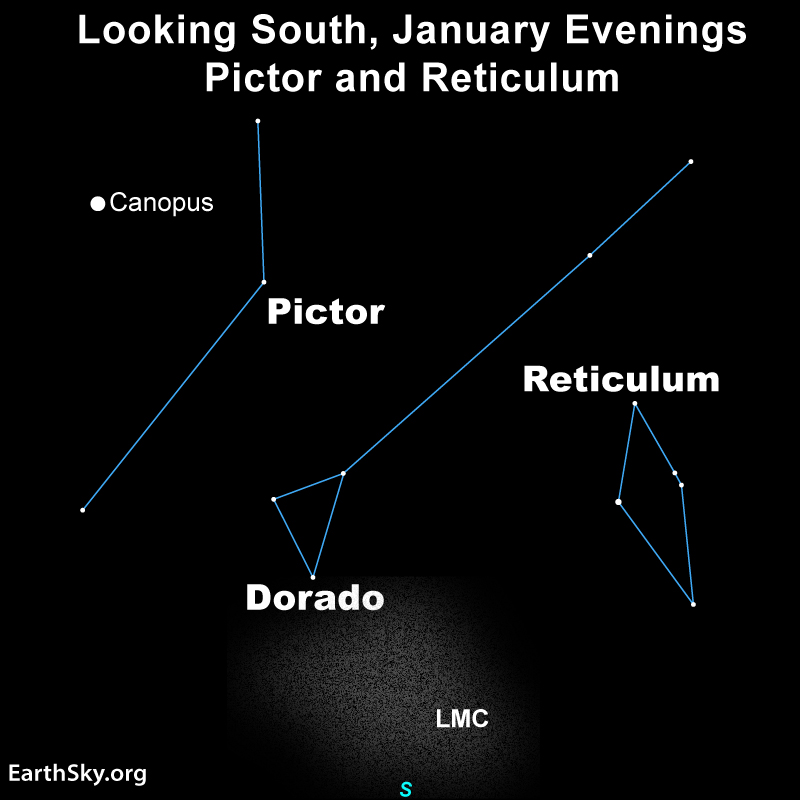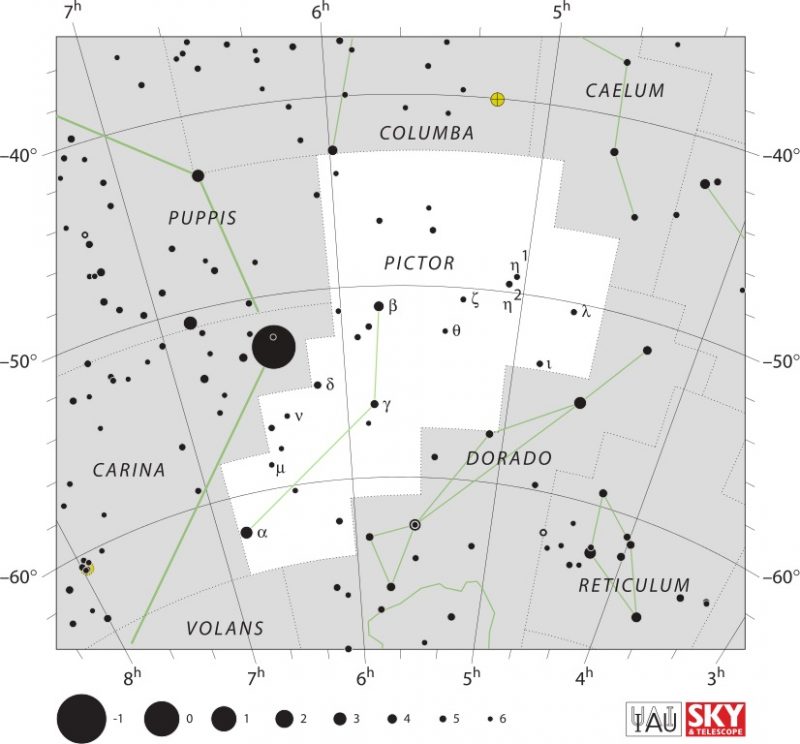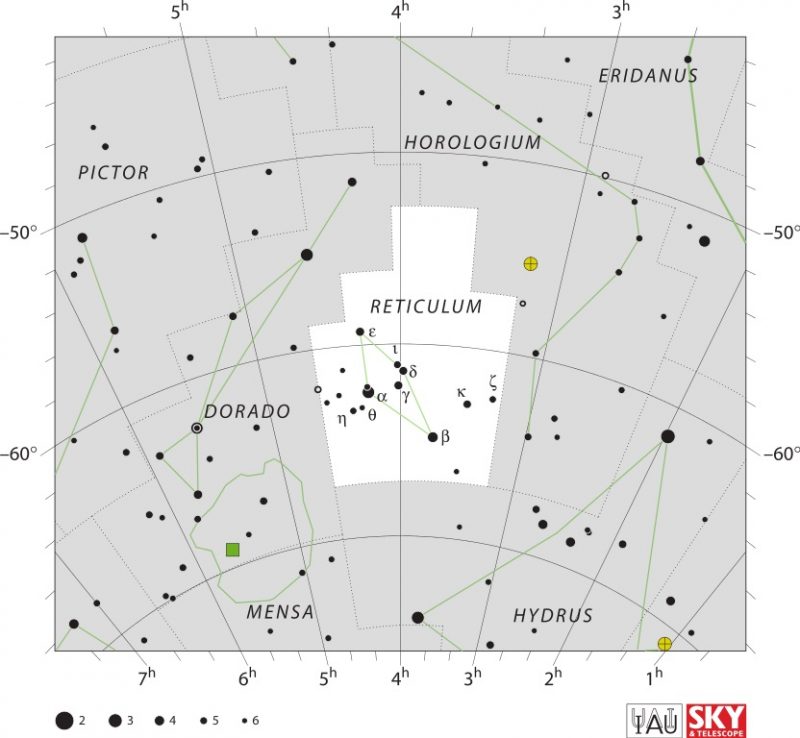
Pictor and Reticulum
Pictor and Reticulum are small constellations that lie on either side of the Large Magellanic Cloud (LMC) in southern skies. And Dorado, the constellation home to the LMC, lies between them. Nicolas-Louis de Lacaille named both these constellations. He named Reticulum for a reticle, or net, referring to the crosshairs of an eyepiece, like those used in a spotting scope. Lacaille named Pictor for a painter’s easel.
Pictor the Painter’s Easel
While Pictor may not have many bright stars itself, it does lie right next to the 2nd-brightest star in the sky, Canopus. So this should help make Pictor easier to find. Plus, a cloudy stretch of the Milky Way lies on one side of Canopus, and Pictor is on the other. Also, you can find Pictor by looking between Canopus and the LMC.
Pictor’s brightest star is Alpha Pictoris at magnitude 3.24. And it lies about 99 light-years away.
Then the 2nd-brightest star is Beta Pictoris at magnitude 3.85. Beta Pictoris lies about 63 light-years away. Scientists discovered a dusty disk around Beta that is approximately 10 times larger than the sun’s solar system. Inside this disk scientists found not only two planets but at least 30 exocomets.

Reticulum the Net
Once you’ve found Pictor, you can star hop over Dorado, home to the LMC, to reach Reticulum the Net. Its brightest star, Alpha Reticuli, is magnitude 3.33 and lies 163 light-years away. The 2nd-brightest is Beta Reticuli at magnitude 3.84 and 100 light-years distant.
Only a half degree from Alpha Reticuli is the galaxy NGC 1559. At magnitude 10.5, the barred spiral galaxy will require a telescope for you to spot. Australian amateur astronomer Robert Evans discovered three supernovae in the galaxy, in 1984, 1986, and 2005.

Bottom line: Pictor and Reticulum, the Painter’s Easel and Net, are two constellations in southern skies on either side of the Large Magellanic Cloud.











